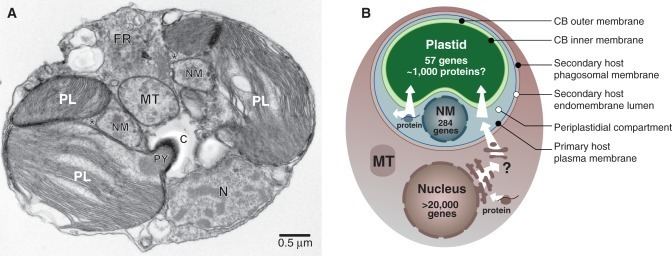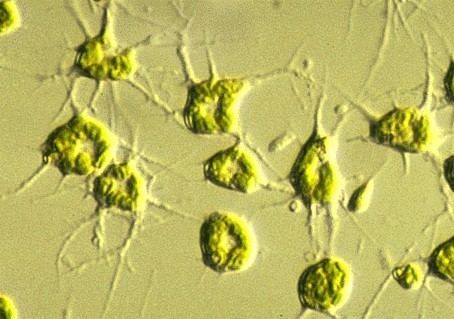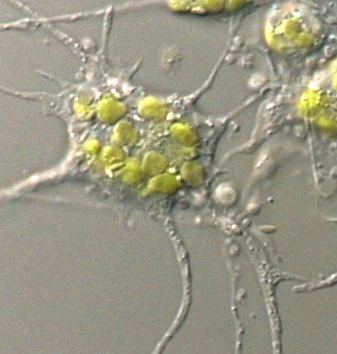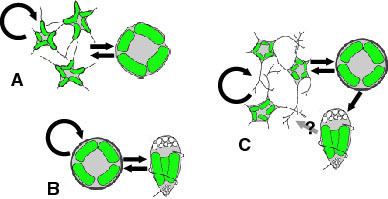Domain Eukaryota Subphylum Filosa Family Chlorarachniaceae | Order Chlorarachniales Scientific name Chlorarachnea Rank Class | |
 | ||
Similar Eukaryote, Glaucophyte, Cryptomonad, Haptophyte, Cercozoa | ||
Cytoplasmic movement between cells of chlorarachniophyte
The chlorarachniophytes are a small group of algae occasionally found in tropical oceans. They are typically mixotrophic, ingesting bacteria and smaller protists as well as conducting photosynthesis. Normally they have the form of small amoebae, with branching cytoplasmic extensions that capture prey and connect the cells together, forming a net. They may also form flagellate zoospores, which characteristically have a single subapical flagellum that spirals backwards around the cell body, and walled coccoid cells.
Contents
- Cytoplasmic movement between cells of chlorarachniophyte
- How to pronounce chlorarachniophyte
- Phylogeny
- Taxonomy
- References
The chloroplasts were presumably acquired by ingesting some green alga. They are surrounded by four membranes, the outermost of which is continuous with the endoplasmic reticulum, and contain a small nucleomorph between the middle two, which is a remnant of the alga's nucleus. This contains a small amount of DNA and divides without forming a mitotic spindle. The origin of the chloroplasts from green algae is supported by their pigmentation, which includes chlorophylls a and b, and by genetic similarities. The only other group of algae that contain nucleomorphs are the cryptomonads, but their chloroplasts seem to be derived from a red alga.

The chlorarachniophytes only include five genera, which show some variation in their life-cycles and may lack one or two of the stages described above. Genetic studies place them among the Cercozoa, a diverse group of amoeboid and amoeboid-like protozoa.

The chlorarachniophytes were placed before in the order Rhizochloridales, class Xanthophyceae (e.g., Smith, 1938), as algae, or in order Rhizochloridea, class Xanthomonadina (e.g., Deflandre, 1956), as protozoa.

How to pronounce chlorarachniophyte
Phylogeny
Based on the work of Hirakawa et al. 2011.
